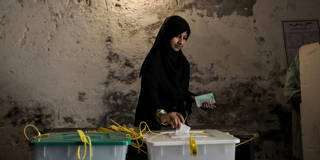When Pakistanis vote in this month's general election, more women will be on the ballot than ever before. But the percentage of women casting votes will remain low, as cultural and religious obstacles continue to impede gender equality in the country's political process.
ISLAMABAD – One hundred years ago, women in the United Kingdom gained the right to vote, and today, most women in the developed world are enfranchised. But in many developing countries, the resistance that British suffragettes faced a century ago, rooted in misogyny, persists. This is certainly true in Pakistan, where the general election set for July 25 provides an ideal opportunity to advocate for change.
At first glance, Pakistan seems progressive. The law has permitted women to vote since 1956, almost a decade after independence from Britain. Since then, the number of women in parliament has steadily increased, aided by a 33% quota and rules dictating how many women must be included on party lists.
Women are also contesting elections with more frequency, even in culturally conservative parts of the country. For example, in the northwestern region of Khyber Pakhtunkhwa, a 100-year-old woman is running in the general election against former cricket star Imran Khan. And in Tharparkar, an impoverished part of Sindh province, a female candidate is on the ballot for the first time ever.

ISLAMABAD – One hundred years ago, women in the United Kingdom gained the right to vote, and today, most women in the developed world are enfranchised. But in many developing countries, the resistance that British suffragettes faced a century ago, rooted in misogyny, persists. This is certainly true in Pakistan, where the general election set for July 25 provides an ideal opportunity to advocate for change.
At first glance, Pakistan seems progressive. The law has permitted women to vote since 1956, almost a decade after independence from Britain. Since then, the number of women in parliament has steadily increased, aided by a 33% quota and rules dictating how many women must be included on party lists.
Women are also contesting elections with more frequency, even in culturally conservative parts of the country. For example, in the northwestern region of Khyber Pakhtunkhwa, a 100-year-old woman is running in the general election against former cricket star Imran Khan. And in Tharparkar, an impoverished part of Sindh province, a female candidate is on the ballot for the first time ever.